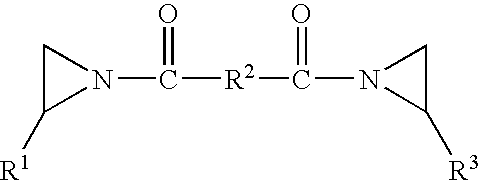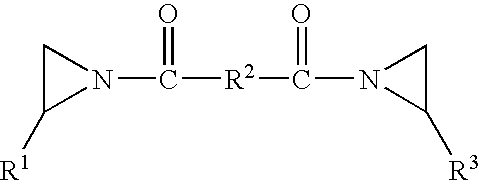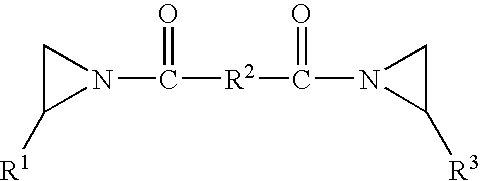Pressure sensitive adhesive composition, articles made therewith and method of use
- Summary
- Abstract
- Description
- Claims
- Application Information
AI Technical Summary
Benefits of technology
Problems solved by technology
Method used
Image
Examples
examples
[0047]The following non-limiting Examples further illustrate features of the preferred embodiment. All parts, percentages, ratios, and the like that are disclosed in the Examples and elsewhere in the specification are by weight unless indicated otherwise.
Test Methods
90 Degree Peel Adhesion Strength Test
[0048]This test method was based on ASTM D 3330 “Standard Test Method for Peel Adhesion of Pressure-Sensitive Tape,” American Society for Testing and Materials, West Conshohocken, Pa. Pressure sensitive adhesive tape samples, prepared as described in the Examples and having release liners on each side of the tape, were cut into one inch (2.54 centimeter (cm)) wide test strips having a length of about six inches (15.2 cm). One liner was removed and the test strip was applied to an aluminum panel (adhesive in contact with the aluminum) using a 4.5 pound (2.04 kilogram (kg)) rubber roller by passing the roller over the test strip lengthwise three times in each direction. Prior to applica...
examples 1-2
[0059]Two acrylic pressure sensitive adhesives containing a 95:5 wt. ratio of n-butyl acrylate:acrylic acid were prepared by first polymerizing the acrylic monomers, then adding a solution of bisamide crosslinker to the solution polymer. More specifically, 114 parts n-butyl acrylate (herein “BA”), 6 parts acrylic acid (“AA”), 0.24 parts VAZO® 67 thermal polymerization initiator (available from E. I. du Pont de Nemours and Company, Wilmington, Del.), and 180 parts of ethyl acetate (EtOAc) as solvent, were added to a glass bottle. A nitrogen gas purge was run through the solution for about 5 minutes, followed by capping of the bottle. The capped bottle was placed in a rotating launderometer at a temperature of 55° C. for 24 hours. After removal from the launderometer the bottle was allowed to cool to room temperature (about 24° C.). The solids level was measured and found to be 40%. This first polymer solution (polymer solution A) was then diluted to 20% solids by adding 100 parts 2-p...
examples 3-4
[0064]Two acrylic pressure sensitive adhesives containing a 92.5:7.5 wt. ratio of n-butyl acrylate:acrylic acid were prepared by first polymerizing acrylic monomers, then adding a solution of bisamide crosslinker to the solution polymer. More specifically, 231.25 parts n-butyl acrylate (BA), 18.75 parts acrylic acid (AA), and 594.7 parts acetone were added to a reaction vessel that was previously flushed with nitrogen. A nitrogen gas purge was run through the solution, then under nitrogen, 0.3 parts per 100 parts of monomers (phr) VAZO® 67 was added. The vessel was capped and the polymerization proceeded at a temperature of 59.5° C. for 24 hours. After removal from the vessel, the polymer solution (polymer solution C) was allowed to cool to room temperature (about 24° C.). The solids level was 29.3%.
[0065]Next, to a bottle containing 50 parts of polymer solution C, 0.15 parts IRGANOX 1010 was added followed by the bisamide crosslinker solution of Example 1-2, using the amounts in Ta...
PUM
| Property | Measurement | Unit |
|---|---|---|
| Temperature | aaaaa | aaaaa |
| Temperature | aaaaa | aaaaa |
| Percent by mass | aaaaa | aaaaa |
Abstract
Description
Claims
Application Information
 Login to View More
Login to View More - R&D
- Intellectual Property
- Life Sciences
- Materials
- Tech Scout
- Unparalleled Data Quality
- Higher Quality Content
- 60% Fewer Hallucinations
Browse by: Latest US Patents, China's latest patents, Technical Efficacy Thesaurus, Application Domain, Technology Topic, Popular Technical Reports.
© 2025 PatSnap. All rights reserved.Legal|Privacy policy|Modern Slavery Act Transparency Statement|Sitemap|About US| Contact US: help@patsnap.com



